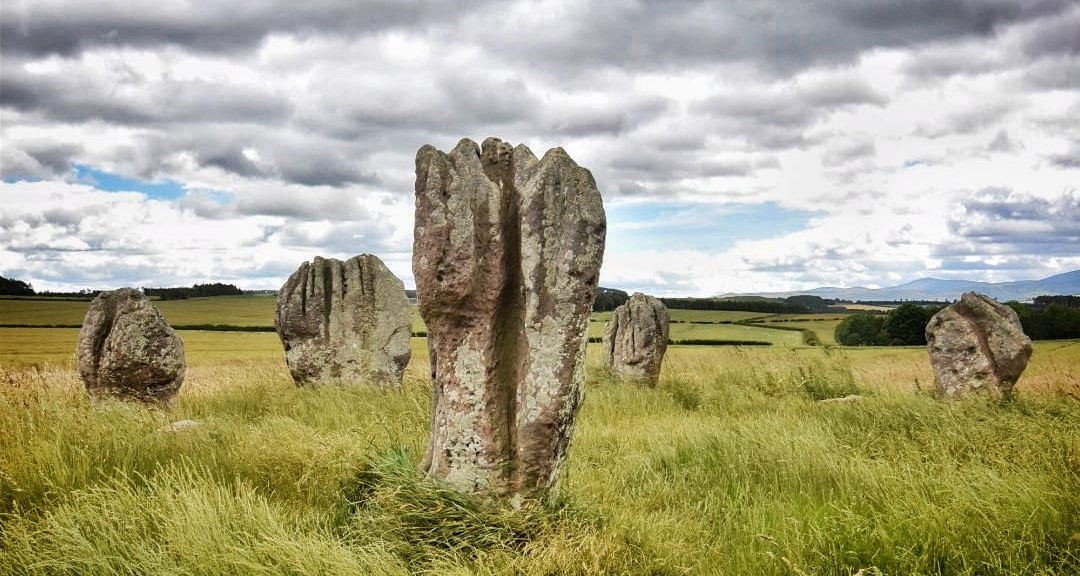A Brief History of Northumberland: From Ancient Roots to Modern Times
Northumberland, a historic county in northeastern England, is a region defined by its resilient spirit, rich heritage, and awe-inspiring landscapes. From ancient tribes and Roman settlements to medieval castles and battles, Northumberland’s history is woven into every stone and cliff. Let’s explore the fascinating journey that has shaped this beautiful region over centuries.
1. Ancient Beginnings and Early Settlements
Northumberland’s story begins thousands of years ago, with evidence of Neolithic settlements across the region. Stone circles, rock carvings, and hill forts, such as those at Yeavering Bell and Simonside Hills, reveal the lives of prehistoric communities who first made Northumberland their home. These early people left a lasting legacy in the form of Cup and Ring carvings on stones across the county, which remain a captivating mystery for historians and archaeologists.
As the Bronze and Iron Ages dawned, the area became more structured with defensive hill forts, indicating a move towards organised settlements. The discovery of tools, pottery, and burial mounds points to thriving communities connected through trade and culture.
2. The Romans and Hadrian’s Wall
In the first century AD, the Romans arrived in Britain, dramatically altering the course of Northumberland’s history. Under the command of Emperor Hadrian, they built Hadrian’s Wall, a 73-mile-long fortification stretching across the region. The wall, constructed between 122 and 128 AD, was intended to keep out the tribes from the north and served as a stronghold for the Roman Empire’s northern frontier.
Numerous forts along Hadrian’s Wall, such as Housesteads and Vindolanda, housed Roman soldiers and supported the bustling communities that sprang up nearby. Vindolanda, in particular, has yielded fascinating artifacts, including personal letters and documents, which provide a rare glimpse into daily life during Roman rule.
3. Anglo-Saxon Kingdoms and Lindisfarne
Following the Roman withdrawal in the 5th century, Northumberland became a patchwork of competing kingdoms. It wasn’t long before the kingdom of Northumbria rose to prominence, eventually becoming one of the most powerful Anglo-Saxon kingdoms. The region embraced Christianity in the 7th century, and Lindisfarne, or Holy Island, became a center of learning and spirituality.
Lindisfarne is also famous for the Lindisfarne Gospels, an illuminated manuscript created by monks in the early 8th century that remains one of the most stunning examples of medieval Christian art. However, Lindisfarne’s history also bears the mark of Viking raids. In 793 AD, Vikings launched one of their first attacks on the island, marking the beginning of the Viking Age in Britain.
4. Medieval Conflicts and the Border Wars
Northumberland’s position on the border with Scotland led to centuries of conflict and power struggles. In the medieval period, fortified castles and defensive structures were built to withstand raids from both sides. Castles like Bamburgh, Alnwick, and Warkworth became strategic strongholds and still stand today as testament to this turbulent era.
The region was also significantly affected by the Wars of the Roses and other feudal disputes, with families like the Percys and Nevilles often finding themselves at the center of political strife. The construction of castles was both a defensive measure and a statement of power, shaping Northumberland’s landscape and defining its medieval heritage.
5. The Industrial Age and Economic Changes
The Industrial Revolution brought significant economic changes to Northumberland in the 18th and 19th centuries. Coal mining became one of the region’s key industries, with mining communities developing around places like Ashington, Bedlington, and Blyth. The county also played a crucial role in shipbuilding and fishing, with bustling ports supporting local economies and connecting Northumberland to broader trading networks.
Railways expanded, making travel and transport easier, and Northumberland’s ports continued to thrive. However, the decline of coal mining and traditional industries in the 20th century led to economic challenges, pushing the region to shift towards tourism and heritage preservation.
6. Modern Northumberland: Heritage, Conservation, and Tourism
Today, Northumberland proudly preserves its heritage sites while embracing new roles as a tourist destination and conservation leader. Hadrian’s Wall is a UNESCO World Heritage site, attracting history enthusiasts from around the world. Meanwhile, Northumberland National Park and the Northumberland Coast Area of Outstanding Natural Beauty protect the region’s natural landscapes and offer endless recreational activities for families and adventurers alike.
Efforts to preserve historic buildings, castles, and museums continue, fostering an appreciation for Northumberland’s vibrant past while supporting local economies. From the ancient stones of Hadrian’s Wall to the scenic shores of Bamburgh, Northumberland remains a place where history is alive in every landscape and tradition.
Conclusion: A Legacy Carved in Stone and Spirit
Northumberland’s history is one of resilience, adaptation, and cultural richness. It has weathered invasions, embraced faith, endured political strife, and experienced economic transformation. This blend of history and heritage makes Northumberland a captivating destination for visitors and locals alike, where the past is never far from view. Whether you’re exploring ancient sites, walking the paths of Roman soldiers, or admiring the beauty of medieval castles, Northumberland’s legacy is one to treasure.

Monks at Lindisfarne Priory – Credit @darrensphotos




